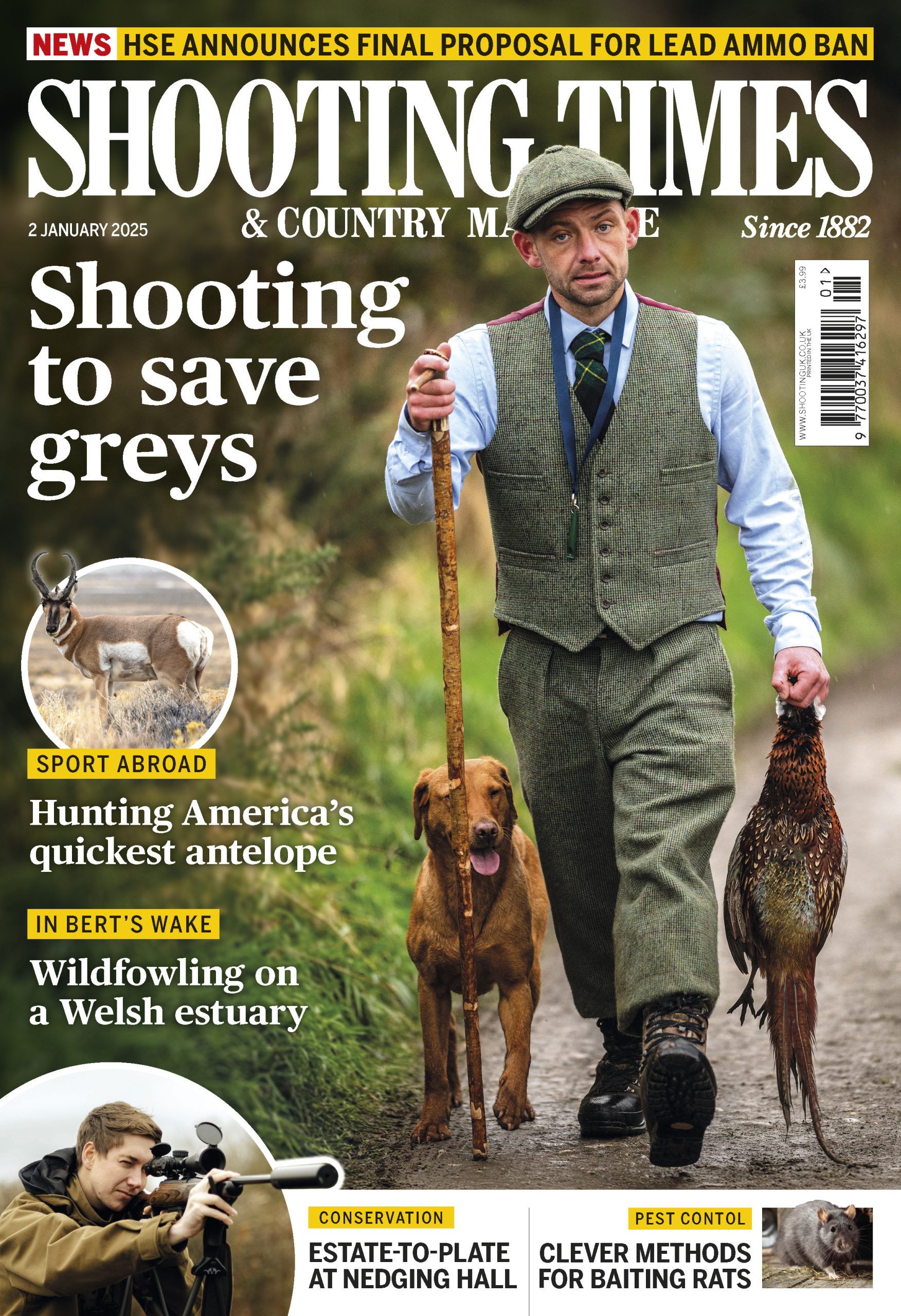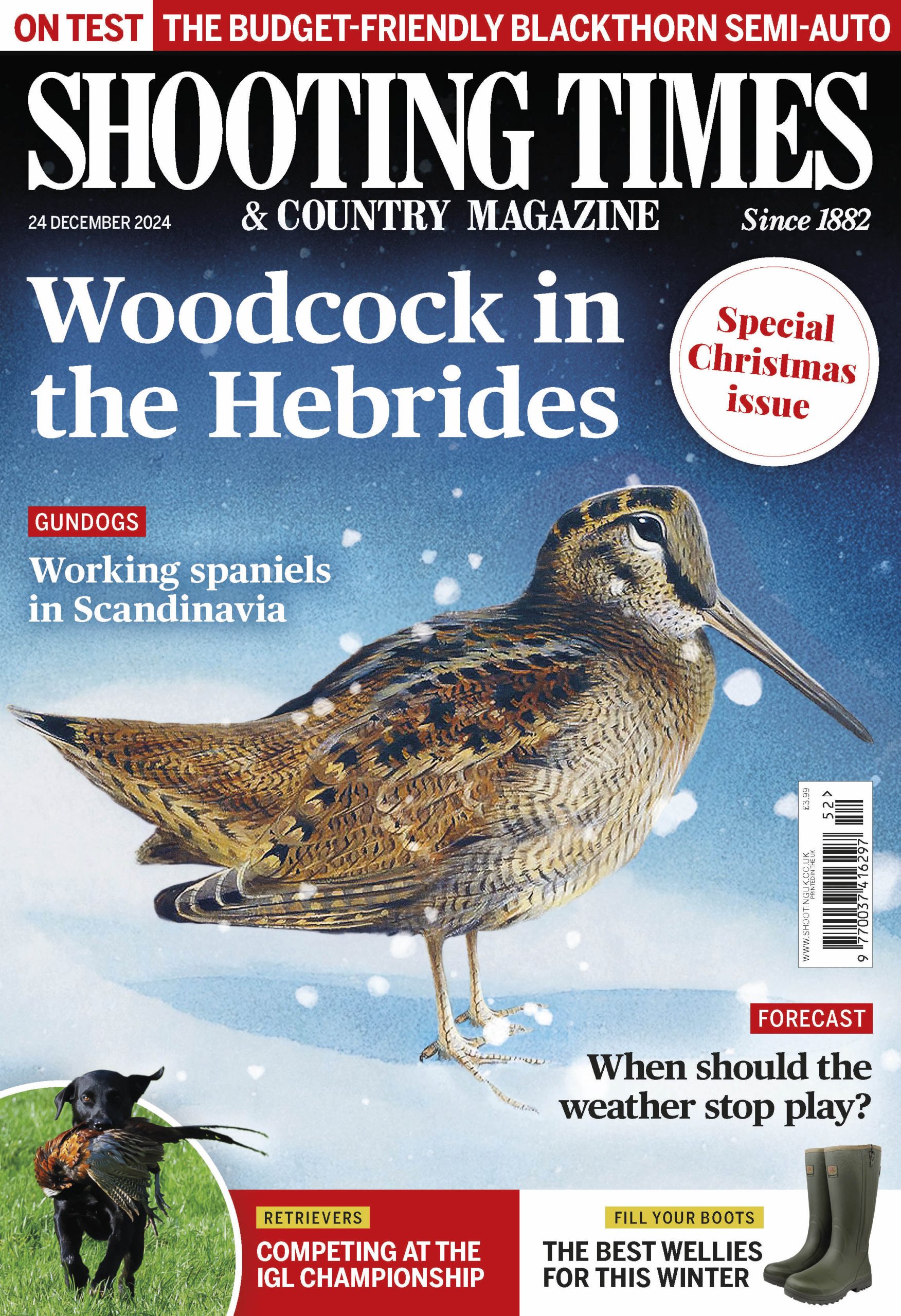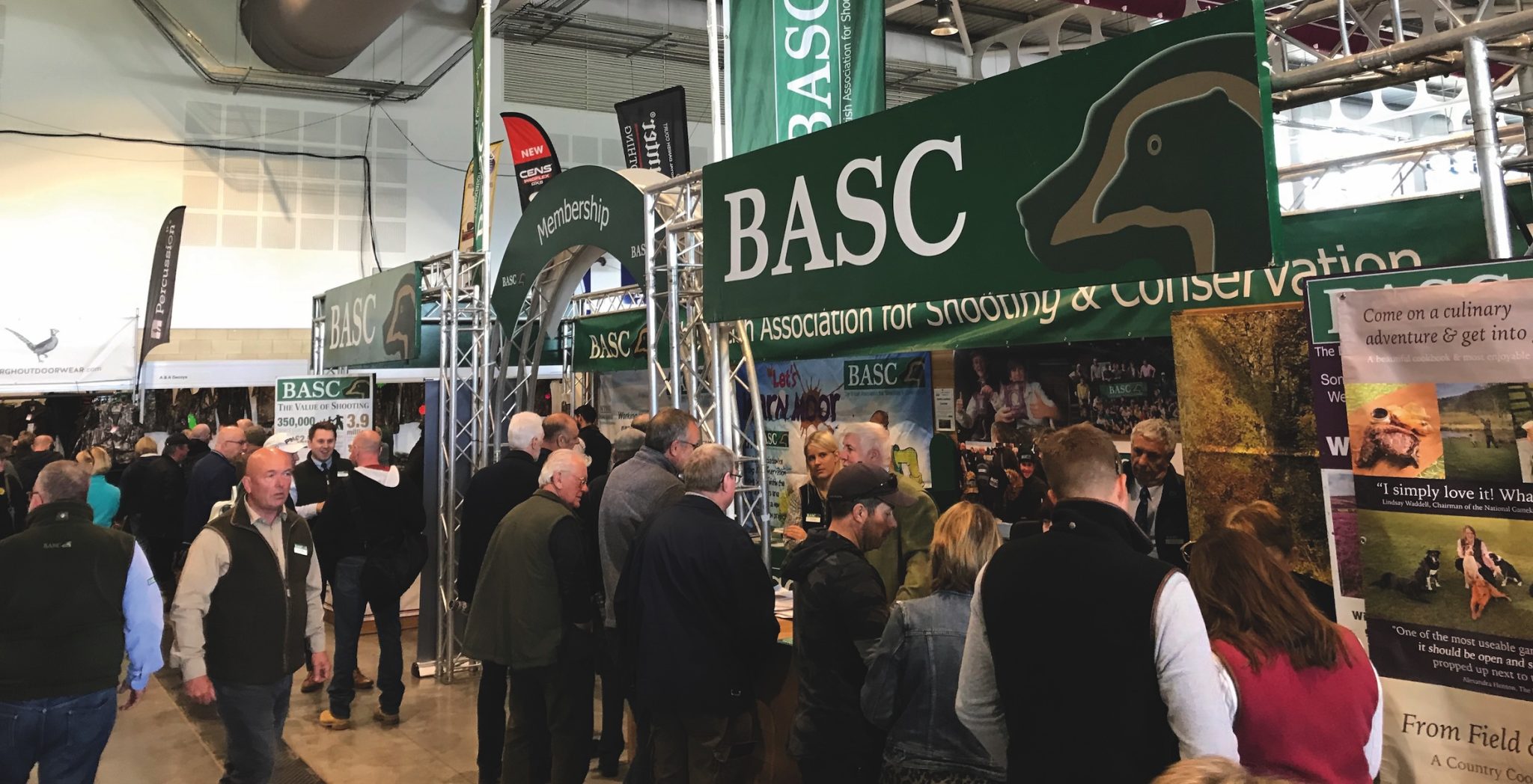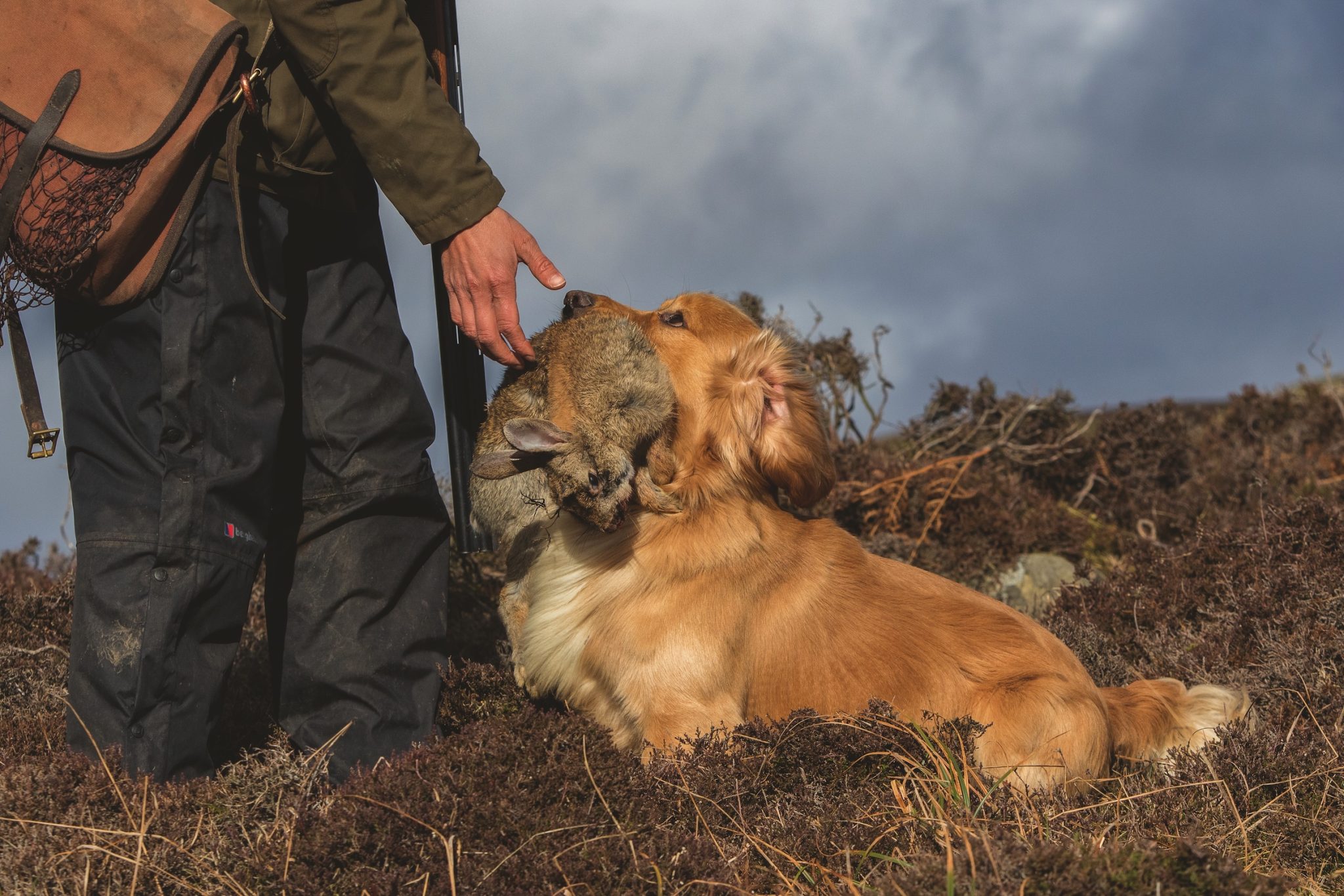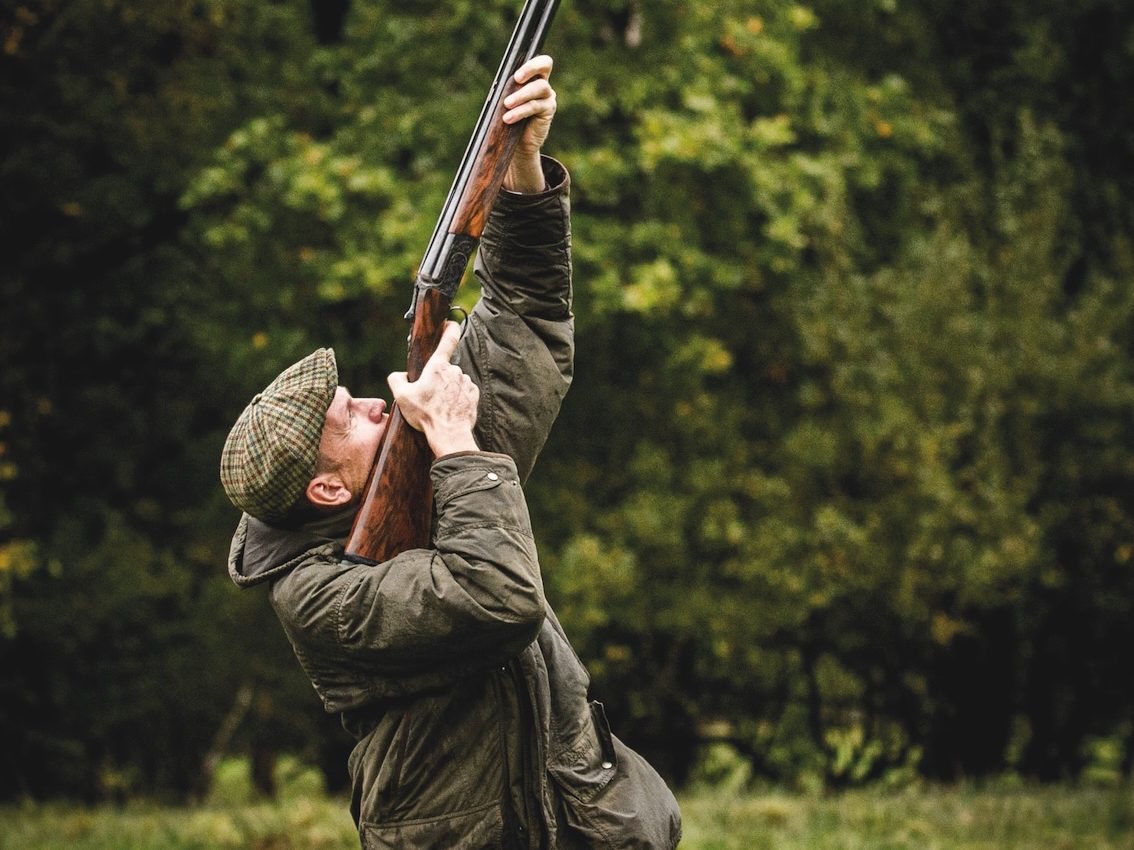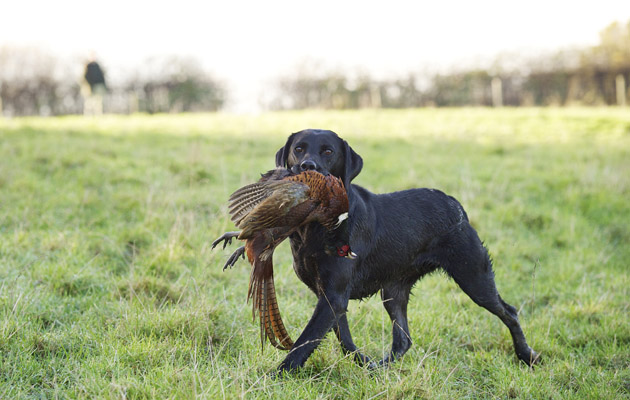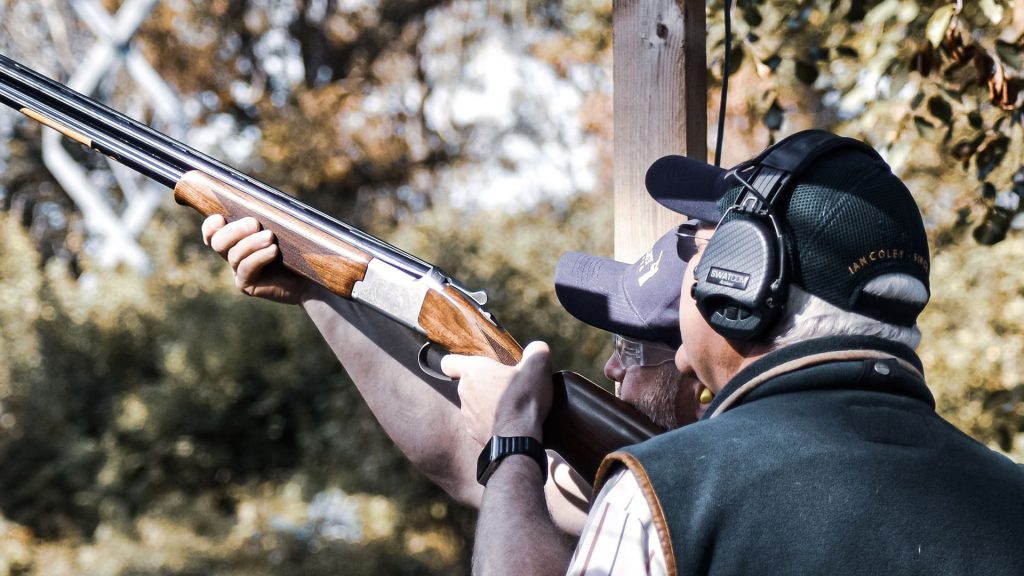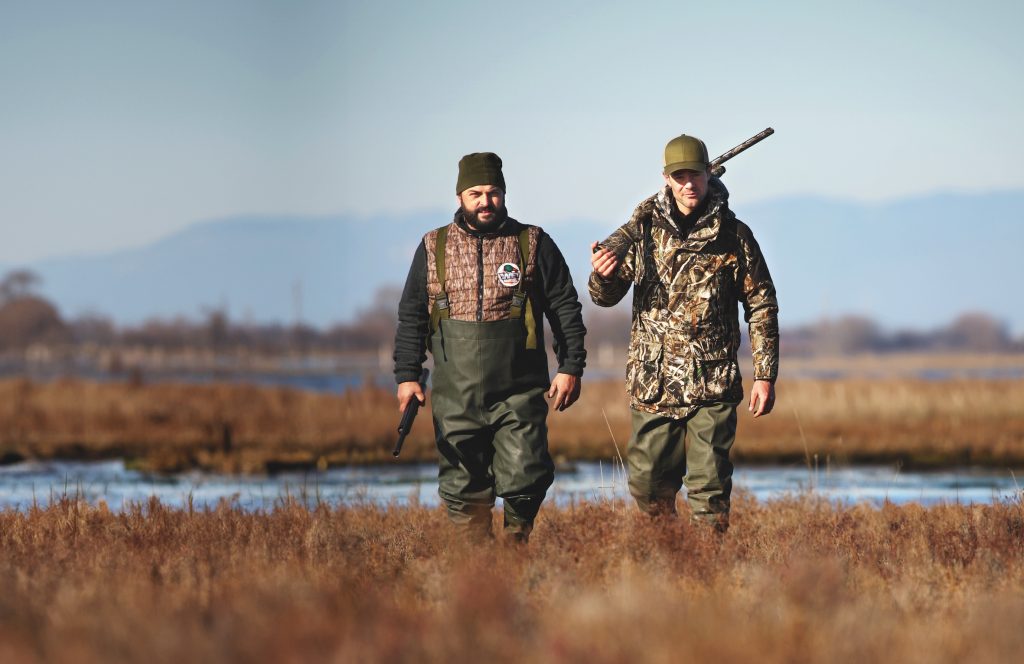Tramping across heather is mesmeric. One step, another; one step, another. Horizons and granite grab the gaze and it’s hard to focus on the…
Win CENS ProFlex DX5 earplugs worth £1,149 – enter here
The pleasure of working dogs on a grouse moor
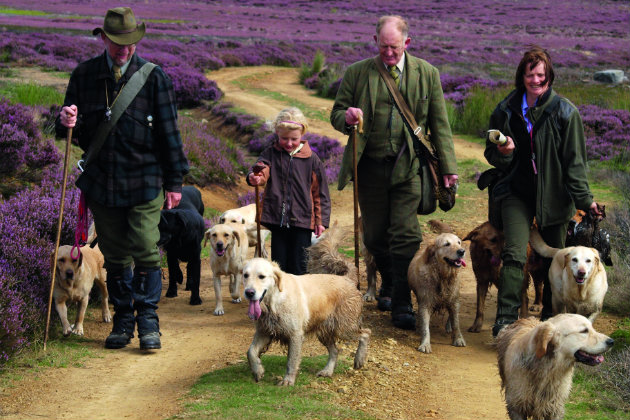
For most of us the shooting season is still months away. If, however, you are fortunate enough to work your dogs on the grouse moors, there’s just three weeks or so to go before the start, assuming that grouse stocks are robust enough for shooting to begin on 12 August. However, since the introduction of medicated grit, grouse populations no longer rise and fall in cycles as they once did, so the odds are high that most moors will be shooting soon.
German wirehairs particularly favoured
I’ve always lived a long way from the nearest grouse moor, so my excursions to the moors have always been something of a treat. I’ve never been grouse-shooting in Wales or Ireland, but I’ve had some memorable experiences in both northern England and Scotland. Quickly adding up the dog breeds that I have shot over or worked with on grouse moors produces a a remarkable total of 15 different types, to which must be added several crossbreeds, for there are a number of upland keepers who favour crosses with continental pointers in general and German wirehairs (GWP) in particular.
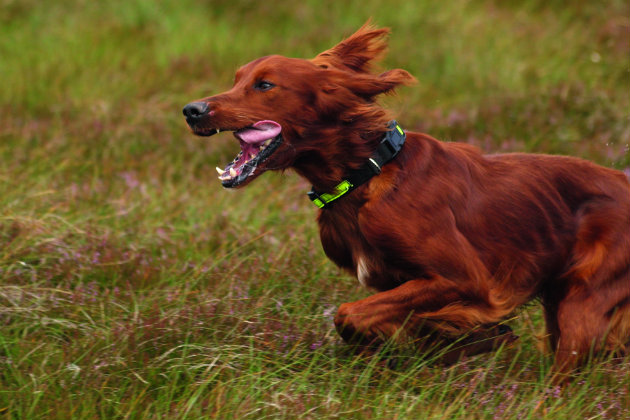
Watching pointers and setters quartering a moor, covering the ground with ease and elegance, is always a joy
One of them is ST contributor Lindsay Waddell, a keeper at the Raby Castle estate, one of England’s premier grouse moors. Lindsay has a GWP crossed with an English springer. He told me earlier this year: “The attraction of these wiry crosses is that they are robust and have great stamina, thanks to their hybrid vigour. They are also very intelligent, though the problem can be that they think too much. If it’s a good dog, it’s a good dog, regardless of whether or not it’s got papers.”
A delightful Labradoodle
Last August I spent a day on Grimwith Moor in the Yorkshire Dales National Park. Though Grimwith is primarily a driven moor, I joined a party shooting over pointers and setters. Irish and Gordon setters provided the primary dog power, but the back-up included English springers, Labradors and a most delightful Labradoodle called Trigger. He was, I discovered, the ultimate multi-purpose shooting dog. Absolutely rock-steady, he was blessed with an outstanding nose and a soft mouth, making him a fine retriever. However, he also carried a set of panniers, in which were stored such essentials for a day on the moor as water bottles and sandwiches.
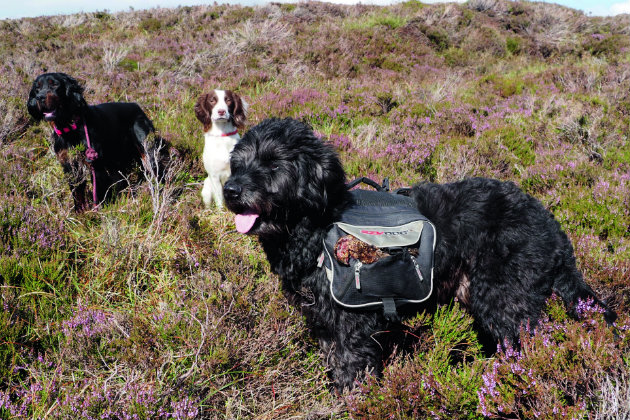
Is Trigger the only Labradoodle in the UK that goes on shooting expeditions wearing panniers?
Unique is an often wrongly used word, but I suspect that Trigger may well be the only Labradoodle in the UK that goes shooting equipped with panniers. What was also impressive was that he was the sort of dog you could forget about, as he didn’t require any handling. He was always there when you wanted him, but was totally relaxed about retrieving, doing so only when asked. He was as close to being the ideal shooting companion that I’ve come across. Note the word companion, which I use advisedly. The ideal shooting dog, or grouse-moor dog, is another thing entirely.
Grouse-moor dogs
There’s no question in my mind that the setters and pointers are the grouse-moor dogs. To my eye, there’s no more exciting spectacle in the gundog world than watching one of these dogs quartering a moor. They don’t gallop so much as flow, covering the ground with an ease and elegance that can take your breath away. That is if you’ve got any breath left, for walking on a lot of moors tends to make many of us humans short of breath, for the going is often far more difficult than it appears. Those undulating acres of purple heather may look wonderful but, when you try walking over them and discover the hidden bogs and difficult footing, you realise that appearances can be deceptive.
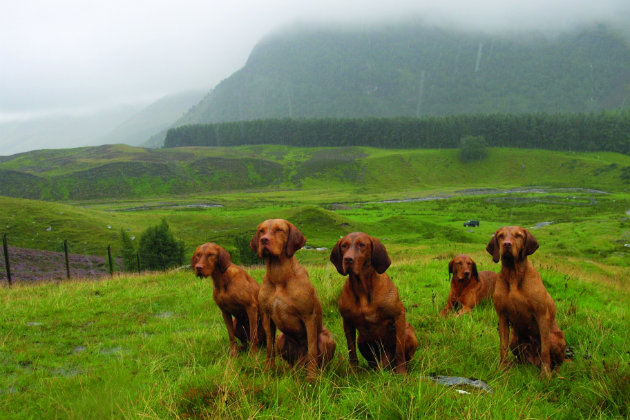
Wet days on the moor aren’t as much fun as the sunnier days for either the Guns or the dogs
The great thing about shooting over pointers and setters is that there’s always plenty of opportunity to get your breath back, for much of the pleasure of the day lies in watching the dogs work. In theory, the guns should never be loaded until the dogs come on point. Early in the season, a good pointer or setter will hold the birds until the Gun, or Guns, get in range. When the shooters are ready, and have loaded their guns, the handler will give the dog the instruction to flush.
The shooting should then be quite easy, but raised heartbeats and lack of puff have been the salvation of many a grouse. It’s also remarkable how the grouse seldom flush from exactly where you expect them to emerge, or even fly in the direction that you anticipate.
A challenging retrieve
However, if your shot is successful and there’s a bird or two down, it’s usually the job of the pointer and setter backup team, the spaniels and retrievers, to do the picking-up. As anyone who has worked dogs on grouse will confirm, it’s not as easy as it looks. Marking a bird’s fall accurately is surprisingly difficult on a grouse moor, where obvious features are often lacking, while wounded grouse have a remarkable ability to hide, making them as challenging a retrieve as any you are likely to encounter.
My day on Grimwith was different, as the pointing dogs were also doing the retrieving. This was a break with tradition, as in this country we have never asked our pointers or setters to retrieve, only to hunt and point. There has always been a concern that, if they were expected to retrieve, too, they would be more likely to become unsteady. Continental handlers have never found this to be a problem, and I suspect that it’s something of a myth. It’s also true that handlers of HPRs always expect their dogs to retrieve, so why not pointers and setters?
Many people understandably confuse shooting grouse over pointers and setters with walked-up grouse shooting, but the two are very different. The former is a very specialised sport, but walking-up grouse is like any walked-up shooting, with the Guns walking in a line — on a moor it’s invariably a ragged one — shooting what flushes in front of them. On the less productive moors, where most walking-up takes place, that’s often not a lot, despite the best efforts of the accompanying spaniels. If you’re not fit, don’t even consider it. The same goes for your dog.
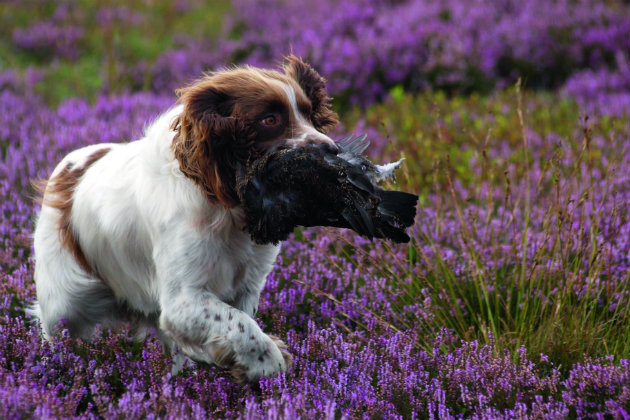
The beaters’ dogs do most of the picking-up on the moor
Beating on a driven grouse moor is equally arduous: both beaters and their dogs have to be supremely fit to undertake drives that might cover miles of moorland where the going is invariably challenging. However, unlike the beaters’ dogs on driven pheasant days, beating dogs on grouse moors usually get to do lots of retrieving. They always get to the butts at the end of the drive before the official picking-up dogs, and this is where the majority of shot birds are to be found.
Picking-up grouse is very different
The pickers-up meanwhile will be scouring the distant heather trying to find birds. Picking-up grouse is very different from pheasants or partridges. There’s always a long wait for the beaters to approach the butts, and it can be idyllic sitting with your dogs in the heather, enjoying the warmth of the August sun and the buzz of the bees. Needless to say, it’s not so much fun when the rain is lashing down and there’s no cover anywhere. It’s usually impossible to watch the drive, as you have to keep your head down to avoid being shot — low shots behind are legitimate in grouse shooting — while most of the grouse are found by sweeping the heather, not in targeted retrieves of individual birds.
The truth is that, though wet days usually outnumber sunny ones, it’s the sunny days you remember best, and there are some that will lure you back year after year. Working your dog on a grouse moor is a great privilege, and it’s one that’s a rare pleasure for those of us who live many miles from the moors. Enjoy it if you can.
Related Articles
Get the latest news delivered direct to your door
Subscribe to Shooting Times & Country
Discover the ultimate companion for field sports enthusiasts with Shooting Times & Country Magazine, the UK’s leading weekly publication that has been at the forefront of shooting culture since 1882. Subscribers gain access to expert tips, comprehensive gear reviews, seasonal advice and a vibrant community of like-minded shooters.
Save on shop price when you subscribe with weekly issues featuring in-depth articles on gundog training, exclusive member offers and access to the digital back issue library. A Shooting Times & Country subscription is more than a magazine, don’t just read about the countryside; immerse yourself in its most authoritative and engaging publication.
